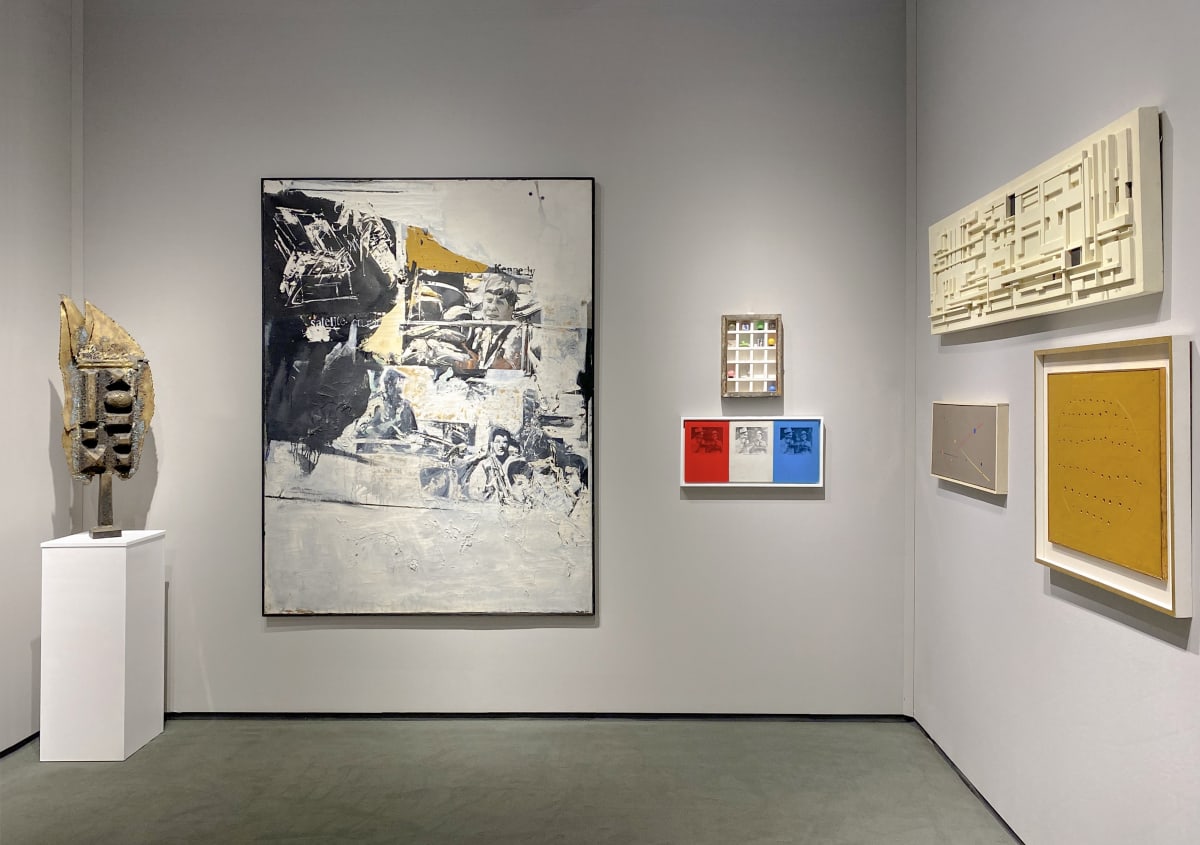Jean Gorin French, 1899-1981
Jean Gorin (b. 1899 Saint-Émilien-de-Blain - d. 1981 Niort, France) studied at the Beaux-Arts, Nantes and discovered Cubism in the early 1920s. In 1926 after reading an article by Mondrian he immediately adopted the precepts of neoplasticism and went to Paris to meet Mondrian and Vantongerloo. He created his first neoplastic relief in 1930, creating three-dimensional work for the remainder of the inter-war period. Mondrian praised Gorin's relief work highly and encouraged by him Gorin abandoned flat painting to realise reliefs and then constructions playing with positive and negative space.
In 1931 involved in abstraction-creation he was invited to USSR. In 1946 after the War Gorin, Auguste Herbin and Albert Gleizes launched the Salon des Réalités Nouvelles, the first of a series of annual exhibitions devoted to ‘abstract/concrete/constructivist/non-figurative art.’ Gorin latterly became part of the Structurists, a group formed in response to Joost Baljeu’s journal STRUCTURE (1958- 1964), along with Charles Biederman, Carlos Cairoli, Ad Dekkers, Anthony Hill, Carel Visser and Gillian Wise, who all found common ground in the theories and principles of their De Stijl predecessors a few decades earlier.
With the Structurists, Gorin participated in the travelling exhibition Experiment in Constructie at the Stedelijk Museum in Amsterdam in 1962 as well as Relief / Construction /Relief, which was inaugurated in 1968 at the Museum of Contemporary Art in Chicago and in 1979 The Evolution of the Constructed Relief 1937-1979, which travelled to Canada and the United States. Solo exhibitions include Centre Pompidou, Paris, 1977 and retrospectives at the Musée des Beaux-Arts, 1965 and 1977, at the Stedelijk Museum, Amsterdam, 1967 and in 1999 at the Musée de Grenoble.




